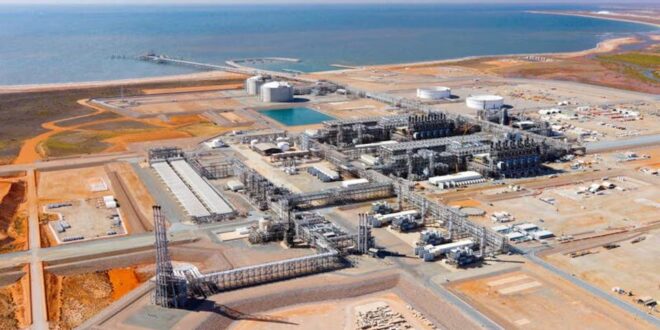AUSTRALIA’s natural gas producers are increasingly confident that their fuel is vital to the energy transition and will play a role across Asia up to and beyond the 2050 net-zero emissions targets of companies and countries.
This optimism was on full display at the industry’s annual gathering in the capital city of Western Australia state, which is also home to the bulk of the country’s liquefied natural gas (LNG) production.
Australia was the world’s biggest LNG exporter until being overtaken by the United States last year.
But it’s not only a powerhouse in supplying the super-chilled fuel, as Australia dominates seaborne exports of metallurgical coal used to make steel and ranks second behind Indonesia in shipments of thermal coal, used mainly to generate electricity.
The annual conference of the Australian Energy Producers, held this week in Perth, was characterised by repeated statements from a variety of industry leaders about how vital natural gas is, and will remain, in the energy transition.
The reality is somewhat more nuanced than the bullish narratives, and the industry is largely correct about some of its assumptions, optimistic on others and also currently falling well short of what’s needed to actually put Australia, and the Asian customers of its energy exports, on a path to net-zero emissions.
There are several key arguments that the natural gas and LNG industry make to support their view about how essential their product is, but the most important effectively still boils down to saying they are better than coal.
The accepted position is that using LNG to generate power in an Asian country produces about half the carbon emissions than using imported thermal coal, meaning that the industry is correct in saying they are better than coal.
Displacing coal does help the decarbonisation process, but reducing emissions is only a step towards net-zero.
Ultimately, if you are burning a fossil fuel, you are creating emissions that you have to capture and store, or offset in some other way, if you want to achieve net-zero targets. This is where the optimism shown by the industry gets more tricky.
For natural gas to have an ongoing role in the energy transition, several things need to happen, and some of them are largely beyond the control of the industry.
The main requirement is a price on carbon emissions, and not just in each country, there needs to be some form of unified Asian carbon tax and credit system that allows for trading, investment and cooperation between energy exporting countries and those that import.
A carbon tax helps LNG displace coal and also provides a major incentive for the industry to invest to abate its own emissions.
A strong focus in the conference this year was Carbon Capture and Storage (CCS), with speaker after speaker once again saying how vital this technology will be to getting to net-zero. The problem is the industry has been saying this for years, and doing very little to advance significant projects.
Australian oil and gas producer Santos is one of the few that has actually built a plant to capture emissions at its Moomba gas hub in central Australia, which is expected to start operations later this year.
The plant aims to store an initial 1.7 million tonnes of carbon dioxide, which while useful is tiny fraction of Australia’s annual greenhouse gas emissions of 432 million tonnes in 2022.
There are other CCS projects under consideration, but even if all of them came to fruition, they would still only be the first steps on a very long decarbonisation road.
Australia does have competitive advantages for CCS, including suitable geology and depleted reservoirs that can be used for injecting carbon emissions.
But there isn’t yet the carbon pricing or regulatory framework that will allow for the importation of carbon dioxide from countries in Asia where sequestration opportunities are low, such as Japan and South Korea.
CCS is also likely to work far better for abating the upstream production of oil and gas, but will be very expensive to implement at the point of combustion in Asian energy importers such as Japan.
Capturing carbon emissions at a power plant would cost at least US$100 per tonne for one million tonnes per annum, according to data from consultants Wood Mackenzie, a price point that would currently render the electricity generated economically unviable without additional support.
“We see CCS as last mile decarbonisation,” Wood Mackenzie analyst Stephanie Chiang told Reuters in an interview on Tuesday. This is why a carbon price is the essential piece of the puzzle.
It gives certainty to investment decisions, it is technology agnostic insofar as it will allow companies to work out the best method for them to abate, and if high enough, it will allow for fossil fuels to remain in the energy mix through CCS. — Reuters
Clyde Russell is a columnist for Reuters. The views expressed here are the writer’s own.
 BeritaKini.biz Berita Viral Terkini di Malaysia
BeritaKini.biz Berita Viral Terkini di Malaysia





